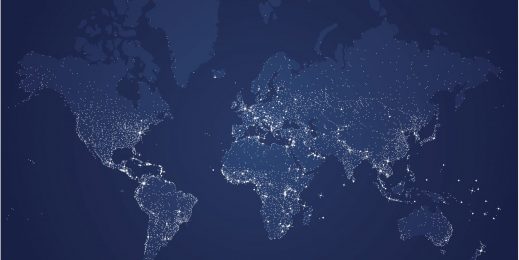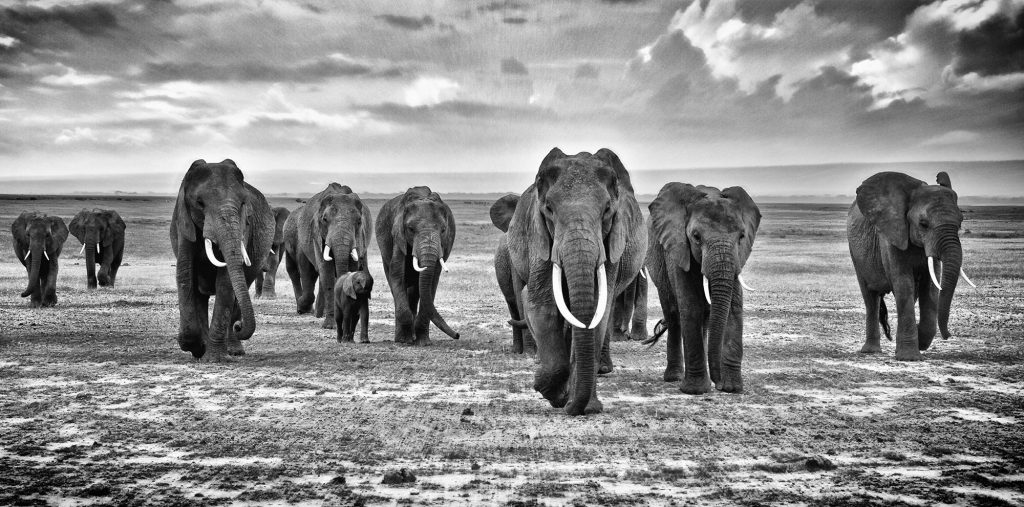
How technology is helping combat wildlife crime
Connected conservation
Situated in the foothills of Aberdares and Mount Kenya, on the equator west of Nanyuki, lies the Ol Pejeta Conservancy – a 90,000-acre non-profit safe haven for endangered species in Africa.
What started out as a cattle ranch in old colonial Kenya has now become the largest black rhino sanctuary in East Africa, and home to three of the world’s last remaining northern white rhinos.
A small graveyard peppered with weathered gravestones is located towards the east of the conservancy. The cemetery pays tribute to the lives of all the Ol Pejeta rhinos killed in the poaching epidemic that has ravaged wildlife in the region. It not only stands as a bleak reminder of the devastation caused by the illegal trade in rhino horns but is also an inspiration to visitors to continue supporting rhino conservation efforts.
In a concerted effort to bring some of Africa’s most threatened animals back from the brink of extinction, Ol Pejeta has turned to technology to give it the upper hand in the war against poaching.
White spaces for wildlife
In the past, animals at Ol Pejeta were tracked using radio collars and satellite uplinks that were unreliable and ill-adapted to match the animals’ nomadic roaming habits.
However, with the advance of technology solutions designed to combat wildlife crime, the sanctuary remains a trailblazer of conservation innovation on the African continent.
In fact, Ol Pejeta has become the pioneer of using TV White Spaces (TVWS) technology to keep track of the animals that have found refuge in the park, ultimately keeping them safe.
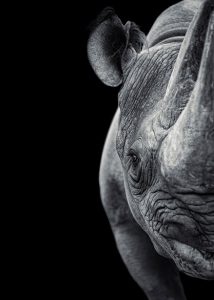
TVWS are unused broadcasting frequencies in the wireless spectrum. Television networks leave gaps between channels for buffering purposes, and this space in the wireless spectrum can be used to deliver widespread broadband internet.
To improve access to technology in the region, Microsoft 4Afrika announced the deployment of a TVWS project in 2014. Its partnership with the Kenyan Ministry of Information and Communications and Kenyan Internet Service Provider, Indigo Telecom Ltd., delivers low-cost, high-speed wireless broadband. This helps create new opportunities for commerce, education, healthcare and delivery of government services across Kenya.
Project ‘Mawingu’, which is Kiswahili for cloud, is in Nanyuki, a town near Ol Pejeta and about 200 kilometres north of Nairobi. There are several schools, a health clinic, local government, the Red Cross, and young entrepreneurs in the town and its surrounding areas currently using the technology.
In addition to being affordable and wide ranging, TV white spaces can also be used to assist conservation efforts. Because the technology is lightweight and portable, transmitters are placed inside a rhino’s horn, instead of on a cumbersome collar around its neck.
According to Malcolm Brew, founder and CTO of Mawingu Networks, “TVWS plays a significant role in helping us understand what’s going on in these fragile and remote environments. We track animals using the properties of the UHF spectrum, [and] we stream all of this data into the cloud.”
“It makes a big difference in understanding how these environments behave and how best to preserve them,” he adds.
The nexus of technology and conservation
TVWS technology is just one example of how technology is being used in the war against poaching. With syndicates becoming more sophisticated, new high-tech approaches are being developed to quickly detect wildlife crime, nab poachers, and step up law enforcement.
Here are some of the latest innovations providing an edge for the conservation of our precious wildlife:
Drones
Drones are low cost, unmanned aerial vehicles (UAVs), usually used for military purposes. They have increasingly been deployed to help fight wildlife crime and aid conservation efforts. Equipped with night vision, high-resolution cameras and many other cutting-edge features, drones are fast becoming an invaluable asset in the fight against poaching. Ol Pejeta has also teamed up with robotics start-up, Airware, to deploy drone technology specifically designed to help the conservancy protect its precious fauna and flora.

The conservancy does not see drones as the ‘silver bullet’ to poaching, but rather as part of a wider tool kit in the fight against wildlife poaching. Most importantly, they believe the real potential of drones lies in data collection. It gives them a cost effective and accurate way to capture wildlife census data more frequently throughout the year.
DNA
Investigators can use DNA-based mapping and analysis to pinpoint where illicit ivory or rhino horn originates while bolstering law enforcement in high-risk areas.
Artificial Intelligence
Through machine learning, apps can now use data patterns of documented poaching incidents, and to predict where the next incident is likely to occur while mapping out the best patrol routes for rangers.
In just over a decade, more than 7,137 African rhinos have been lost to poaching, with 1,054 killed in South Africa alone in 2016.
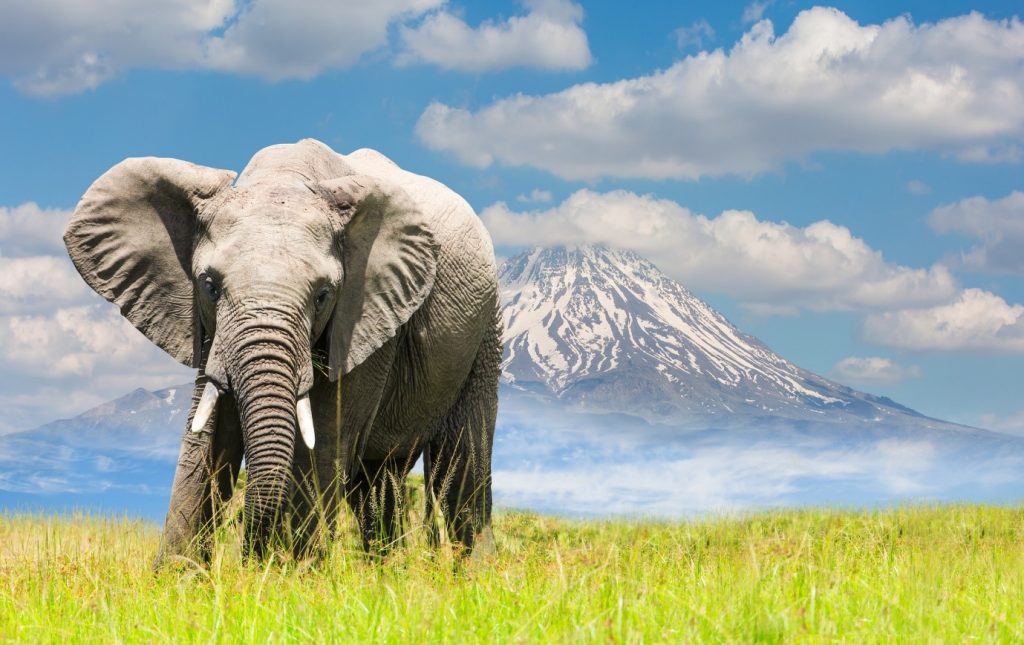
The economic case for investing in conservation technology
Poachers kill between 20,000 and 30,000 African elephants each year for the illegal ivory trade, funded by global organised crime syndicates and fuelled largely by demand in China and elsewhere in Asia. In the past ten years, Africa’s elephants have declined by more than 20 percent.
In addition to driving animals such as rhinos, elephants, pangolins, abalone, and sharks toward extinction, the current poaching crisis is costing African countries around US $25 million annually in lost tourism revenue.
According to the cabinet secretary for tourism in Kenya, Najib Balala, the tourism industry is a strong incentive for African governments to protect their wildlife.
Dr Robin Naidoo, a lead wildlife scientist at the WWF agrees, stating that there have always been strong moral and ethical reasons for conserving African wildlife. “Our research now shows that investing in conservation is actually smart economic policy for many African countries,” he says.
Can technology really curb poaching?
We are living at the intersection of two unprecedented ages. The Information Age, defined by technological advancements, mobile devices, the internet and social media networks; and the Anthropocene Age, characterised by the rapid loss of biodiversity caused by human intervention like poaching and climate change.
While high-tech devices and technology innovations could be real game changers for anti-poaching efforts in Africa, it will take a more holistic approach to win the war against poaching on the continent. Government, law enforcement, big business and civil society all need to work together to combat transnational crime and preserve our wildlife for generations to come.








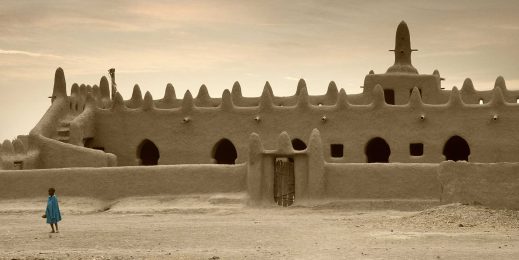

![A security team analyses key data from a visual dashboard.]](https://news.microsoft.com/wp-content/uploads/prod/sites/133/2023/04/Security-Sprint_TL_Banner-Image-519x260.jpg)
